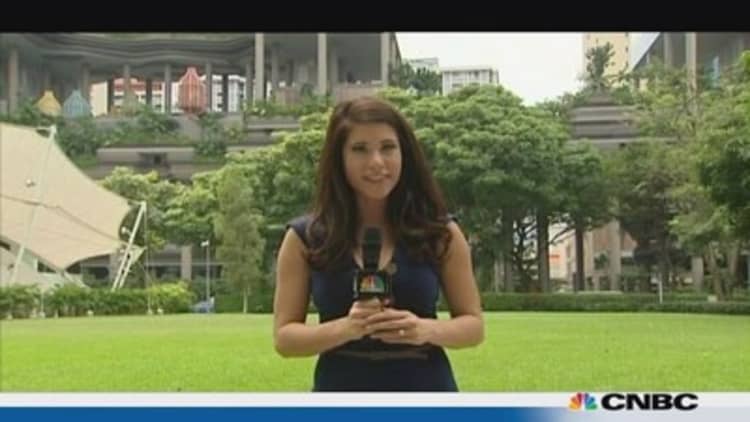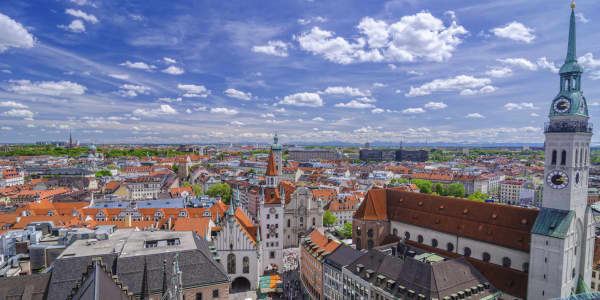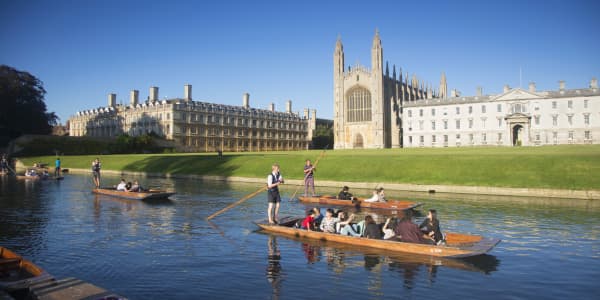
With a population of over five million people, Singapore is one of the most densely populated cities in the world – but it's also one of the most high-tech when it comes to green city planning. Now, other Asian cities are looking to Singapore for inspiration.
"There are so many big cities in this region, (such as) Kuala Lumpur, Jakarta… They are highly urbanised, so sooner or later there is a need to do something to make sure that development is sustainable," John Keung, CEO of the Building and Construction Authority (BCA) in Singapore, told CNBC.
"We thought: 'Why don't we take the lead?'"
(Read more: The next city aiming to become a high-tech boomtown)
Since 2005, over 1,650 buildings in Singapore have been made environmentally friendly, and the government is set to do more. Its Sustainable Development Blueprint outlines a number of "green targets" for 2030 including a recycling rate of 70 percent; a 35 percent improvement in energy efficiency; and 80 percent of buildings to be certified green.
But for architect Liu Thai-Ker, chairman of the Centre for Liveable Cities think tank, government support has been key to transforming Singapore into an environmentally-friendly city at the cutting edge of sustainable development.
"We do have a good government in the sense that they are very pragmatic: they just wanted to get things done right," he told CNBC.
(Read more: Can gaming consoles change the way we chat online?)
"With that kind of background support, I could develop ideas which are good for the cities. For example, in public housing we created new towns based on the British model but substantially modified for Asian needs."
Thai-Ker is a planning advisor to almost 30 cities in China. Chinese authorities, he said, are now beginning to take note and view Singapore as a model in terms of planning and sustainability.
"The trump card is the word Singapore," he said. "Chinese all over the country have been to Singapore… they like what we've done in Singapore and they would like their cities to be developed like Singapore."
But although other Asian cities are taking note of Singapore's sustainable development, replicating the model might not be so easy.
(Read more: How the business of bionics is changing lives)
"Singapore is one city," Henry Steed, Director of ICN Design International, told CNBC. "(But) countries like Thailand and other countries… have many cities, a lack of resources and a lack of expertise in many cases."
As such, a commitment to funding by city authorities and developers was "terribly important."
"Singapore… made that commitment a long time ago -- it does put its money where its mouth is," he added.
Although transforming somewhere like Singapore into an urban oasis is not cheap, Steed stressed that the outlay was worth it.
"As far as the resources are concerned, we've got to look into the long term," he said. "It may cost you a little bit more to put it in at day one, but it will pay for itself over the years."
The BCA, for example, refurbished its own BCA Academy to make it more environmentally friendly, which Keung said had saved the authority money.
"We retrofitted an existing building, changing the façade, providing shading, using solar chimneys and having a very efficient cooling system," he said. "You put all these together and you can cut down the energy need by half, which is very substantial."
Follow us on Twitter: @CNBCWorld




